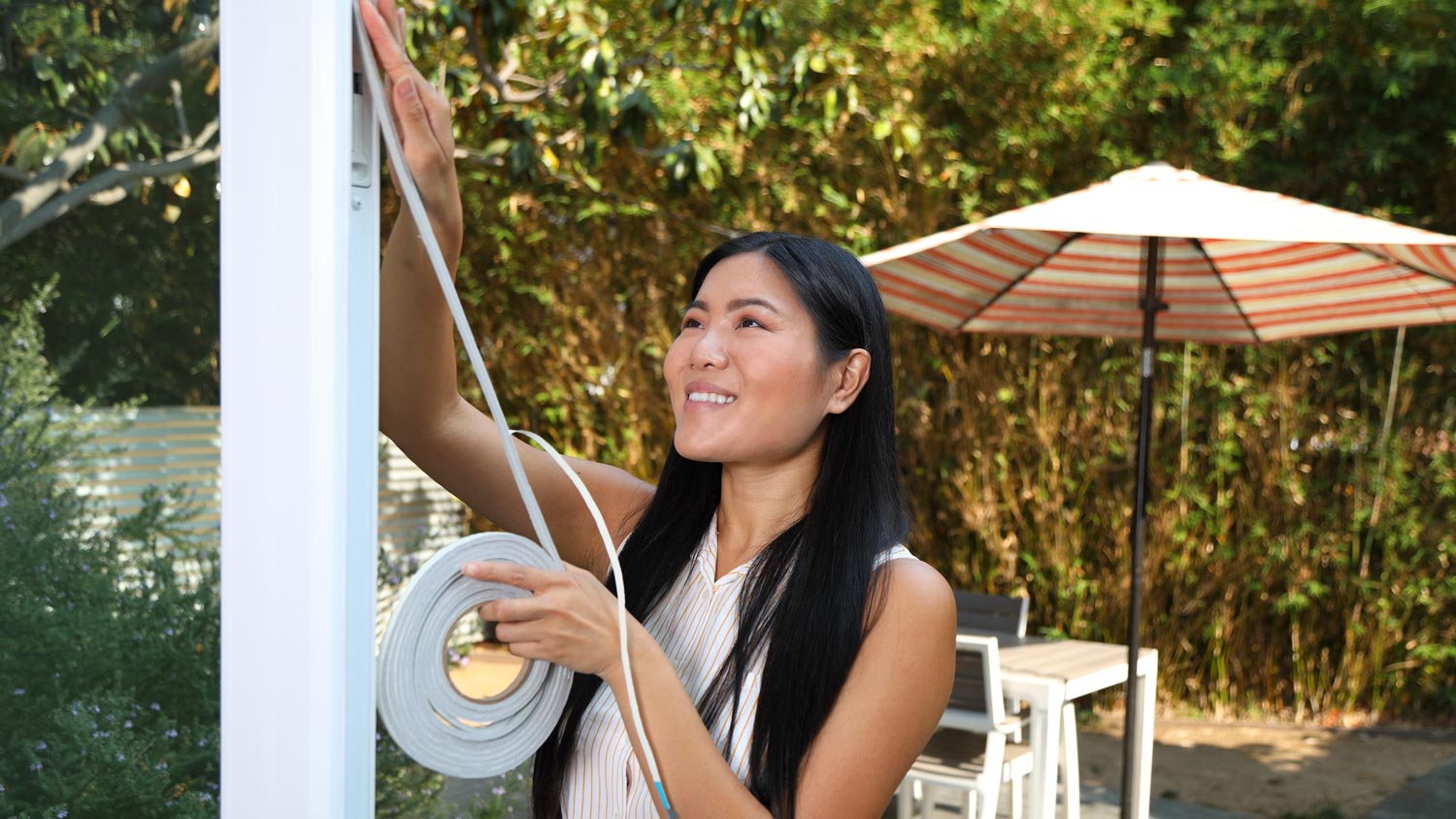
Is it time to upgrade your home’s windows? Learn more about window replacement costs, considering various window sizes, styles, and energy efficiency.
Get the energy savings you need and the comfort you deserve


Thermal pane windows are defined by multiple panes or other insulation properties.
There are different types of thermal pane windows, each varying in features and cost.
Heat transfer, noise, and condensation are reduced with thermal pane windows.
Hiring a pro to install energy-efficient windows ensures proper sealing and longevity.
We lose a lot of energy through our home’s windows, both in the hot and cold months. One way to prevent this costly loss is to install energy-efficient windows. Thermal pane windows are a popular choice for those seeking to save on their utility bill and take advantage of improved insulation in their homes. Let’s dig into the benefits, drawbacks, and installation process of these upgraded windows.
A thermal pane window is a window unit that has two or three glass panes separated by a spacer bar. Additionally, the spaces between the panes in thermal pane windows are filled with air or a special insulating gas, such as argon or krypton. This design makes the window more energy efficient by creating an additional layer of insulation and reducing heat transfer.
The sealed space between the panes also serves as a barrier against moisture infiltration, reducing the likelihood of condensation and fogging. If you’re looking for improved energy efficiency or notice your windows fogging more than normal, it may be time to upgrade to a thermal pane window.
There are several different types of thermal pane windows on the market, and each type suits different needs and preferences. The type of thermal pane window you choose depends on factors such as your energy efficiency requirements, noise reduction needs, and, of course, your budget.
The most common type of thermal pane windows are double-pane windows. They consist of two glass panes with a sealed airspace between them. While they don’t do quite as good of a job at making windows energy efficient as some other types we’ll discuss, these windows offer basic insulation and noise reduction, saving a lot more energy than single-pane windows.
An upgrade from double-pane, triple-pane thermal windows have three glass panes separated by two sealed spaces. These windows provide an even higher level of insulation for reducing heat transfer. Triple-pane windows cost a bit more, but most people see that they pay for themselves quickly in utility savings.
Low-E windows have a microscopically thin, almost invisible coating on one or both of the glass surfaces. This coating reflects heat while allowing visible light to pass through. This improves energy efficiency by reducing heat gain or loss.
In addition to the sealed airspace, thermal pane windows are filled with insulating gasses such as argon or krypton. The gasses have a higher thermal resistance than regular air, further improving the window's insulation properties.
Designed for noise reduction, soundproof thermal pane windows incorporate additional insulation materials and specialized glass to minimize sound transmission in addition to heat transference.

Thermal pane windows offer several benefits, including:
Energy efficiency: They help minimize heat transfer, reducing the need for heating or cooling systems. This can lead to impressive energy savings and noticeably lower utility bills.
Improved comfort: With thermal pane windows, you can more easily maintain a consistent indoor temperature, reducing cold drafts and heat loss near windows.
Noise reduction: Thermal pane windows typically reduce noise transmission, making them a popular choice for homes in noisy environments or near busy streets.
Condensation reduction: You’ll have less moisture entering your home, reducing the likelihood of condensation and fogging on the interior surface of the window.
UV protection: Low-E coatings help protect furniture, flooring, and other interior items from fading or damage caused by UV exposure.
While thermal pane windows offer numerous advantages, there are a few potential drawbacks to consider:
Higher upfront cost: Thermal pane windows generally cost more than traditional single-pane windows due to their more complex construction and higher-quality materials.
Seal failure: Over time, the seals on thermal pane windows may degrade, leading to a loss of insulating gas and reduced energy efficiency. This can result in fogging or condensation between the glass panes, requiring repair or replacement.
Limited repair options: If seal failure or glass damage occurs, a pro may not be easily able to repair it. In most cases, you’ll have to replace the entire window unit.
Weight considerations: Triple-pane windows, in particular, are heavier than standard single- or double-pane windows. This may require additional structural support or adjustments during installation.
Potential for gas leakage: Although rare, there is a possibility of gas leakage from gas-filled thermal pane windows over an extended period. This can affect the window's insulation properties and may require professional repair.
Considering these potential drawbacks, it’s crucial for you to think about the long-term benefits for your home and weigh them against what your initial investment would be, depending on the type of window you choose.
The cost of energy-efficient windows can vary depending on factors such as the window type, size, additional features, and the area in which you live. As a rough estimate, thermal pane windows can cost anywhere from $300 to $1,500 or more per window, including installation. Of course, thermal pane windows are generally more expensive than single-pane windows due to their enhanced insulation properties. Triple-pane and specialized windows designed for noise reduction or enhanced energy efficiency tend to be on the higher end of the price spectrum.

The life span of a thermal pane window can vary depending on many factors, including the quality of the window, installation, and maintenance. On average, a well-maintained thermal pane window can last anywhere from 10 years to 25 years or even up to 50 years in the best cases.
However, it's important to note that seal failure and loss of insulating gas can affect the window's performance over time. If your seal fails, you’ll need to repair or replace your window to restore its insulation properties. Regular maintenance, such as window cleaning and inspection, can help identify any potential issues early on and extend the life span of your windows.
The installation of thermal pane windows requires precision and expertise to ensure a proper fit, secure insulation, and seal integrity. While it is possible to install them yourself, you shouldn’t do so unless you have extensive window installation experience under your belt. We strongly recommend hiring a local window contractor for installation to ensure optimal performance and avoid common (and costly) installation mistakes.
Professional window installers have the necessary experience, tools, and knowledge to handle the complexities of thermal pane windows. They can ensure the windows are correctly sized, properly sealed, and aligned within the window opening.
From average costs to expert advice, get all the answers you need to get your job done.

Is it time to upgrade your home’s windows? Learn more about window replacement costs, considering various window sizes, styles, and energy efficiency.

Garden windows can be a great addition to your kitchen, adding light and a place to grow plants. Costs depend on material, size, and customization—learn how much you can expect to pay.

Find out the cost to replace weatherstripping. Learn about material and labor costs, cost-saving tips, and what impacts your total price.

Adding a bay window brings many perks, like more light and increased home value. But there are some drawbacks to consider before starting this project.

You’ll want to consider tools, techniques, and frame type when replacing windows in stucco. Read on for tips for this exterior home project.

Why is condensation on the inside of your window? There are a few reasons this could be happening, and we break them down here.